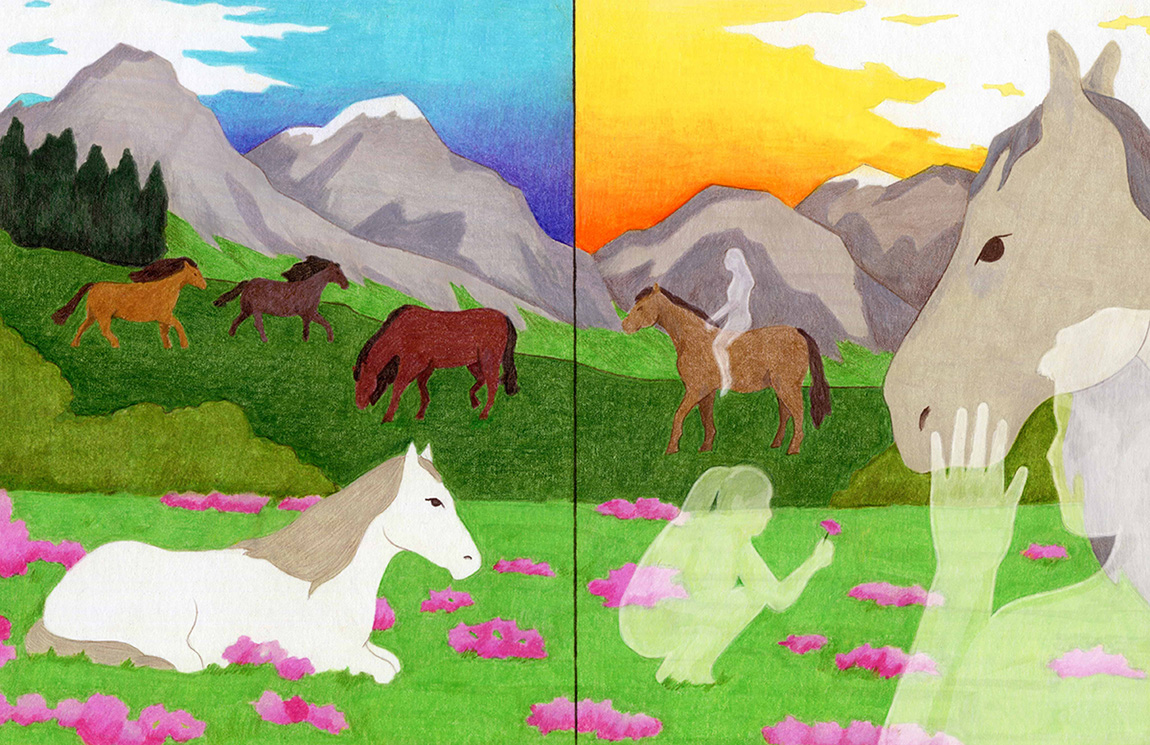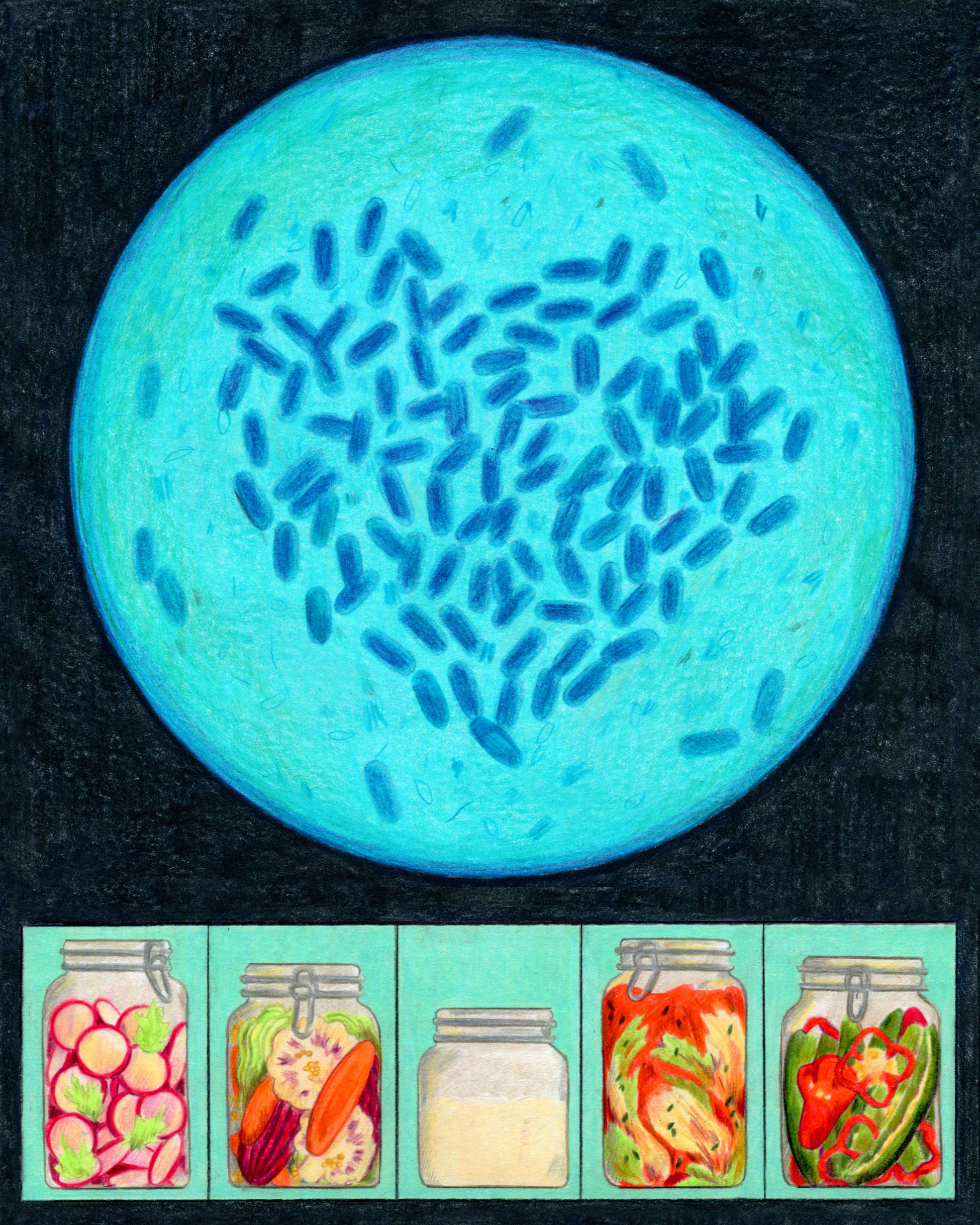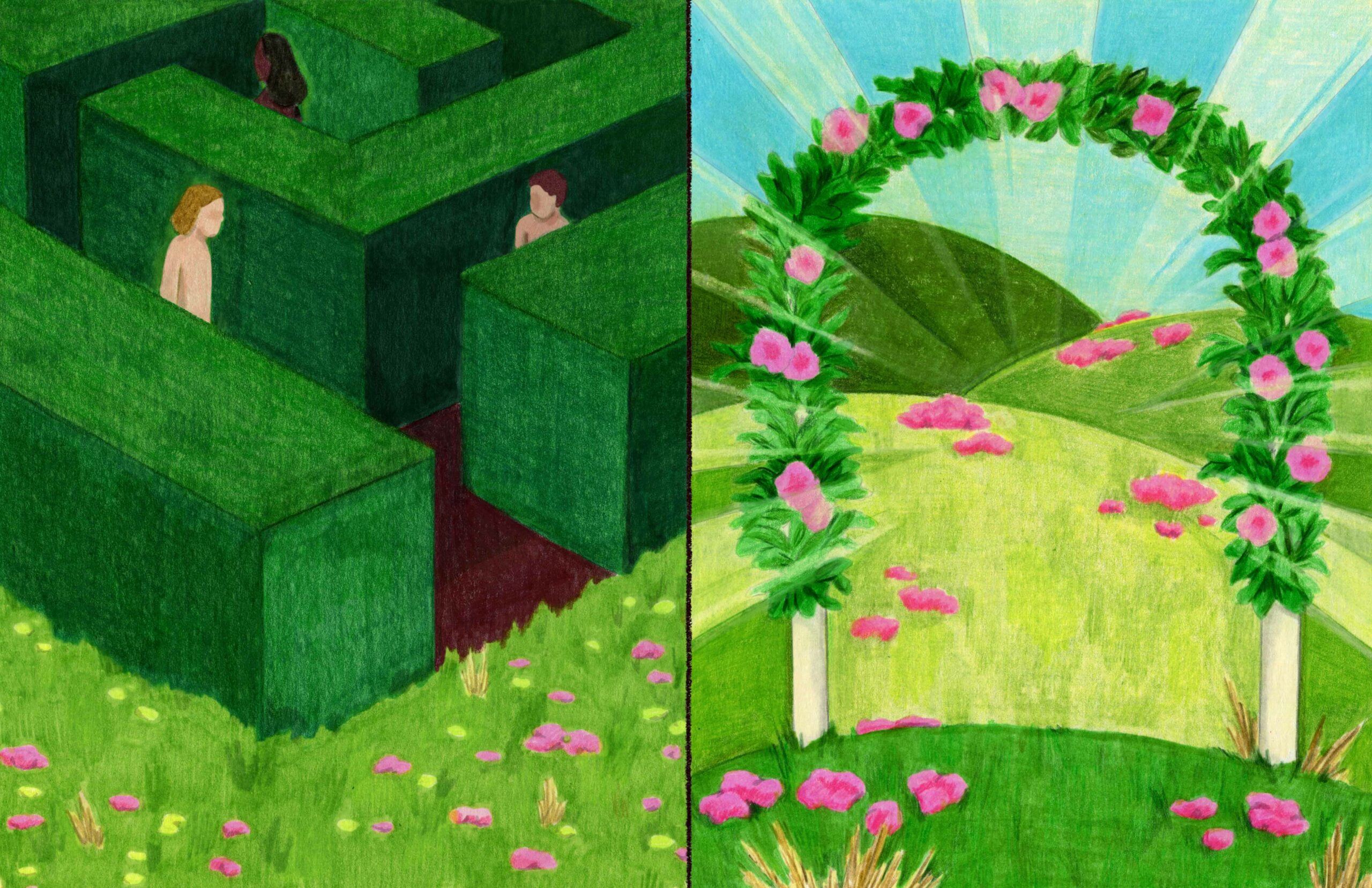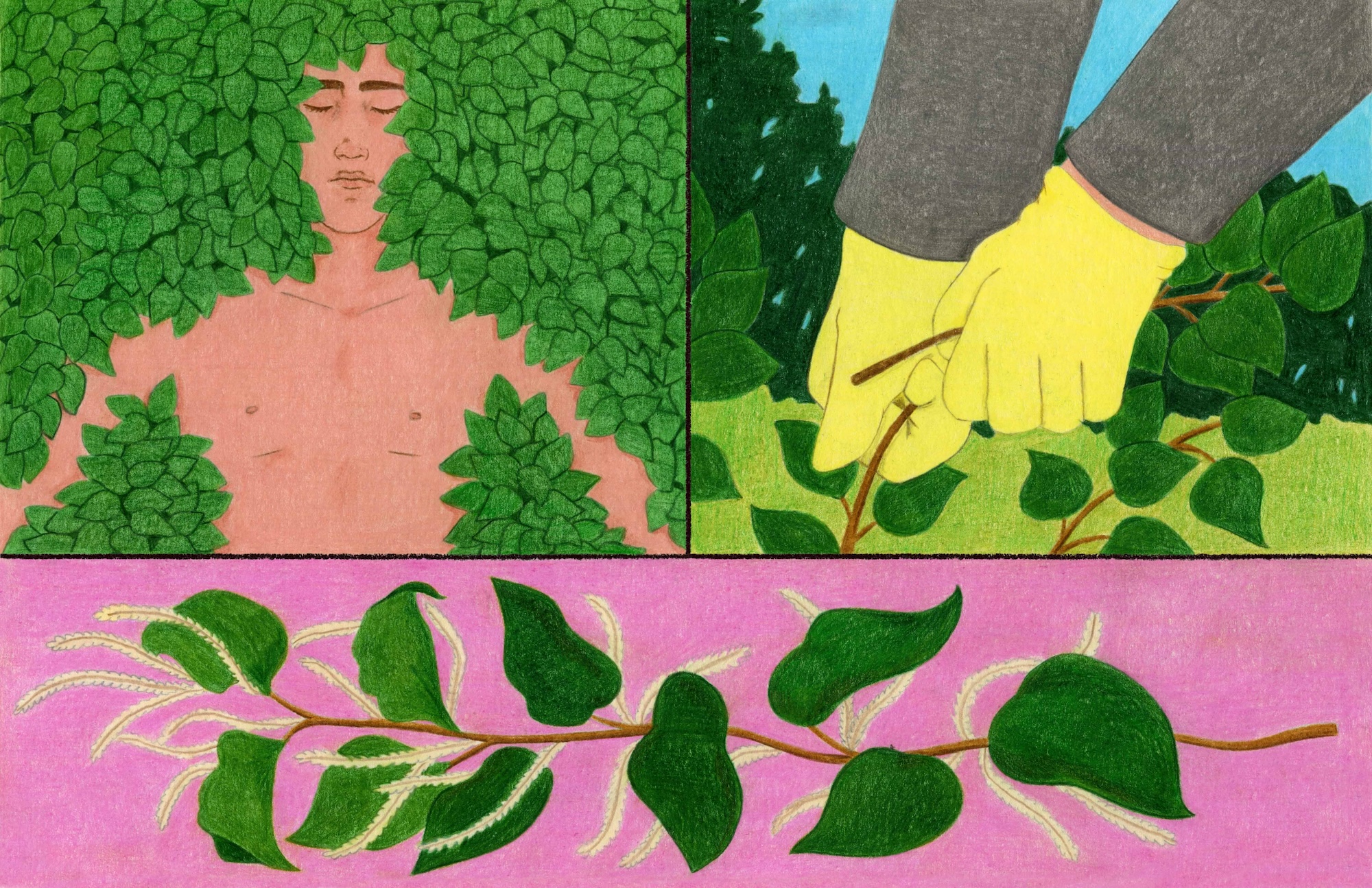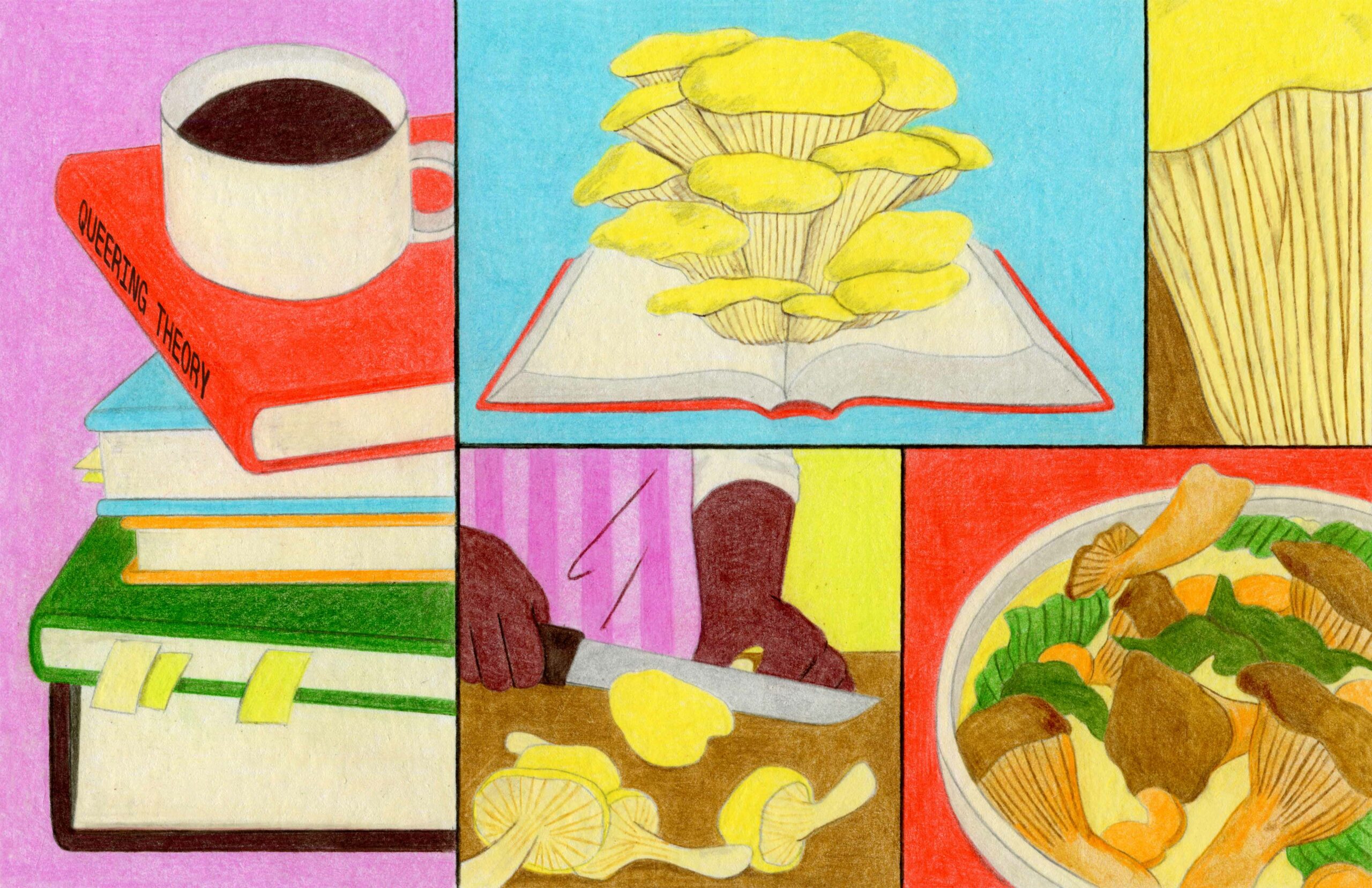Queering Theory untangles critical theory through the multifarious lens of queer theory, food, and ecology.
Normative ecology teaches us to conserve. From national parks to wildlife reserves; ‘natural’ spaces are maintained in unnatural states which negate nature’s flow. Rooted in dualism—which delineates nature from culture—conservation discourages diversification, disregards non-normative ecologies, and displaces populations. Here, queerness comes forward, for it resists normativity in its socially prescribed ‘unnaturalness.’
This series’ opening article, Queering Theory, discussed how the assimilation of ‘queer ecology’—a branch of critical thinking—into normative academia makes it the intellectual resource of the educated. The titular ‘queering’ suggested seeking non-normative mediums through which to communicate these theory’s messages, so they might be more widely accessible. In this second article, we’re looking past the academic practice of queer ecology to examine the ecology it queers. In so doing, we’ll look past the dualistic notions that we exist apart from nature, and understand, instead, that we are a part of it.1
- 1It is important to highlight a few things here. Firstly, though I reference the displacement of Indigenous and traditional communities through conventional conservation, I am not suggesting these communities are queer. Instead, I seek to draw parallels between two non-normative approaches to ecology which conservation negates. Secondly, my intention is not to label queerness as unnatural, so inverted commas are used to indicate when I refer to normative ideas of what is ‘natural’ or ‘unnatural.’ Lastly, there are myriad non-normative interpretations of ecology which are not referenced. I am not overlooking them, but instead identifying how normative ecological practices might be ‘queered.’
‘Conservation’ is defined as the ‘preservation, protection, or restoration of the ‘natural environment.’ Its conventions are typically dualistic, holding that humans exist outside of nature; a normative notion which negates that we, too, are natural. This normative thinking also promotes a ‘natural order’: a moral philosophy which seeks to order nature into an anthropocentrically aligned system. This ‘natural order,’ or ‘balance of nature,’ is rooted in Ancient Greek perceptions, which informed the Christian and Judaic traditions, thus trickling down to us today in our Eurocentric notions.2 This ‘balance,’ or ‘natural order,’ finds parities in the ‘law of nature,’ which suggests ‘natural’ coupling as heterosexual. It is no great leap to see how this ‘balance’ has impacted other forms of social classification; cue eugenics.
- 2 Pierce, F. (2015). The New Wild. London: Icon Books. 180
This system maintains social hierarchies which have been used to rank humans heterocentrically, classing our perceived usefulness by our reproductive habits by placing biological reproduction as the zenith to non-reproductivity’s nadir. This then reflects on the rest of nature, which is classified according to this system of sexual ranking. Within this, queerness becomes ‘unnatural’ in its inadherence, notionally freeing it from the strictures of the ‘natural order’ through its’ lack of definition. It is in this way that queer ecology becomes empowered, for in its difference it is infinite possibility. It is telling that conservation shares its etymology with ‘conservatism:’ the commitment to traditional values which oppose change. Both endeavour to preserve preexisting states; dedicated to disenable diversification.
The preservation, protection, or restoration of environments requires a ‘baseline:’ a point in time before which all present species are ‘native,’ and after which all arriving species are ‘alien.’ Baselines are often when humans arrived, or, more accurately, when white Europeans arrived. In Britain, for instance, baselines are set at the last ice age. In the US, however, the baseline is post-1492.3 ‘Native’ species often become associated with national identity, receiving greater legal protection over ‘aliens.’4 Even biologically neutral terms such as ‘dispersal’ and ‘migration’ are politically weighted.5 These disparities indicate normative conservation’s inherent Eurocentrism in their erasure of preexisting Indigenous inhabitance.
- 3 Otherlands: A world in the making (2022) Thomas Halliday. 67
- 4 Otherlands: A world in the making (2022) Thomas Halliday. 67
- 5 Otherlands: A world in the making (2022) Thomas Halliday. 68
The notion of a conservational ‘baseline’ is rooted in the ‘Discovery Doctrine,’ or terra nullius;6 ‘nobody’s land:’ an early-modern notion that places newly encountered by Europeans were thus uninhabited, irrespective of Indigenous presence, and fair-game to claim. This thinking finds its genesis in Genesis; the Christian tradition in which no sooner were humans created, than God mandated they “Be fruitful and increase in number; fill the earth and subdue it. Rule over […] every living creature that moves on the ground.”7 When one believes their raison d’être is thus divined, it can easily underpin the wholesale colonialism this ‘subduing’ entails, even if the terra was never nullius’.
- 6 How conservation is shaped by settler colonialism accessed 19/10
- 7(Genesis, 1:28)
Compared to a deforested and intensively farmed Europe, Indigenous stewardship8 of the land appeared Edenic to colonists.9 They believed in Genesis’ God-given decree to exploit, so displaced existing Indigenous populations and replaced their stewardship with intensive agriculture. Transforming these lands in their tradition helped Europeans define their capitalist, human enterprise, for it was in contrast to what was considered not developed, that ‘development’ could be gauged.10
- 8Megaliths of the North Eastern Amazon, accessed 04/09.
- 9Pierce, F. (2015). The New Wild. London: Icon Books. 10.
- 10Thomas, Kieth, Man and the Natural World: Changing attitudes in England 1500-1800 (London: Penguin Books, 1983), 267.
Today, ecology still clings to this concept of a ‘pristine’ nature of biassed Eurocentric baselines. Under these auspices, contemporary conservation continues displacing Indigenous populations through ‘green colonialism.’11 In Europe, traditional communities are displaced for ‘rewilding’—the return of landscapes to pre-human states, often at the behest of wealthy landowners.12 Similarly, South American Indigenous communities continue to be removed to ‘restore’ lands to their pre-Columbian state. The irony that these states often resulted from Indigenous stewardship seems lost on many conservationists, who often work for industry-focussed governments.13
- 11How Conservation Became Colonialism, [Accessed: 10/10/23]
- 12George Monbiot, Feral: Searching for enchantment on the frontiers of rewilding.
- 13How Conservation Became Colonialism.
This devotion to conserving landscapes is a practice in failure, for few environments have remained free from human impact.14 Recent studies suggest three-quarters of the planet’s land was already anthropogenically altered 10,000 years ago,15 meaning if Genesis dates Eden’s creation at 4,000 BCE, God might not have been the OG green thumb. Nature exists in constant flux, through which species ebb and flow, so ‘conserving’ a single state in a ‘natural’ stasis is thus inherently unnatural.
- 14 Pierce, F. (2015). The New Wild. London: Icon Books. 11
- 15Untouched nature was almost as rare 12,000 years ago as it is now, Layal Liverpool. (19/04/2021).
Conservation is not just detrimental to nature’s flux, but also presents a social danger. By upholding dualistic notions of a ‘natural/unnatural’ binary, it codifies landscapes against non-normativity, a subject that numerous thinkers have addressed. Queering Theory quotes queer theorist Jonathan Dollimore, that this binary is one of the most violent hierarchies,16 and in their Queer Ecologies (2010), Mortimer-Sandilands et al identify these ‘pristine’ landscapes as prohibiting non-normative sexuality.17 By upholding this dualistic binary, conservation not only ostracizes those who do not adhere to its reproductive norms but also displaces any preexisting Indigenous inhabitants.
- 16Dollimore, J. (1991). Sexual Dissidence. Oxford: Clarendon Press. 109.
- 17Sandilands, C. M., & Erickson, B. (2010). Queer Ecologies. Indiana: Indiana University Press. 12.
This is, of course, a very broad brush with which to tar conservation which, from this queer’s perspective, is far from good practice. Its thinking, though misplaced, is usually ecologically focused; intent on protecting nature. Yet its impacts are nonetheless detrimental, both naturally and socially; as well as in maintaining that dualist division itself. So how might we queer normative conservation? Looking beyond these binaries is a place to start.
The famed thinker Mary Douglas philosophised that ‘matter out of place’ is imbued with power in its lack of definition. The ‘place,’ in question, would be normative constraints; the ‘matter’ which negates it: non-normativity. Within conventional conservation, Indigenous populations, though definitively of place, are the matter out of it, because they don’t conform with the Eurocentric narratives of these supposedly ‘Edenic’ landscapes. What the subsequent defilement of these ‘virginal’ lands says about Eurocentric notions of consent is chilling, yet unsurprising, considering their messiah was conceived through non-consensual insemination.
The misplacement of Douglas’ matter is echoed in Jonathan Dollimore’s “straying,” which suggests deviation from our socially prescribed path reveals the norms’ coercive nature.18 Once said stray has strayed, they cannot unsee this coercion, even when re-coerced. That is to say: freedom can’t be unthought.
- 18Jonathan Dollimore, (1991) Sexual Dissidence, 106.
Taking a different tune, environmental writer Fred Pierce suggests that if there is a ‘norm’ in nature, it is, paradoxically, novelty; for nothing ever stays the same.19 Pierce’s New Wild (2015) manifests a new ecological thinking which embraces change over conservation. He suggests ‘novel ecosystems’—those which result from, or exist despite human activity—are the future of ecology, for it in their resilience they can evolve and coexist with us. This does not excuse our extractivist habits—those must change—but instead, teaches us how we might cohabit with forms of nature we didn’t think were natural.
- 19Pierce, F. (2015). The New Wild. London: Icon Books. 211
This is, of course, nothing new. The very Indigenous peoples whose stewardship inspired European colonists’ Edenic perceptions of terra nullius have been cohabiting with the landscape for millennia. By seeing beyond the dualistic binary that bars Indigenous people from their ancestral lands, conservationists might learn that they should not conserve, but rather steward the land. This isn’t to say that we should abandon conservation’s protection of nature, but instead to loosen our grip, and stop defining ecologies by our anthropocentric notions of what belongs. Ecologies embody not only space, but also time, and exist in constant motion; they are, by definition, intangible. We need to break the binaries by which ecology operates, and learn to see ourselves as part of the nature within which we exist.
Similarly, across culture and ecology, where queerness thrives in the margins, persisting in existing where normativity says it shouldn’t; it becomes a potent example of how nature can thrive, despite our interferences. Queer ecology can teach us that it is in fact what is inherently ‘unnatural’ that we should be championing, for that which we maintain as ‘natural’ is an artificial representation of nature. After all, we are not apart from nature, but rather a part of it.
One of the driving forces behind conservation is sport. If species are to become endangered, what will hunters shoot? This irony only becomes more apparent when we realise that one reason environments are being conserved, is to preserve this idea sporting state.
